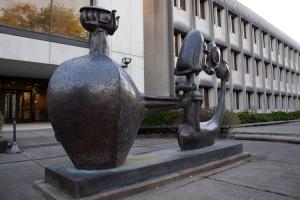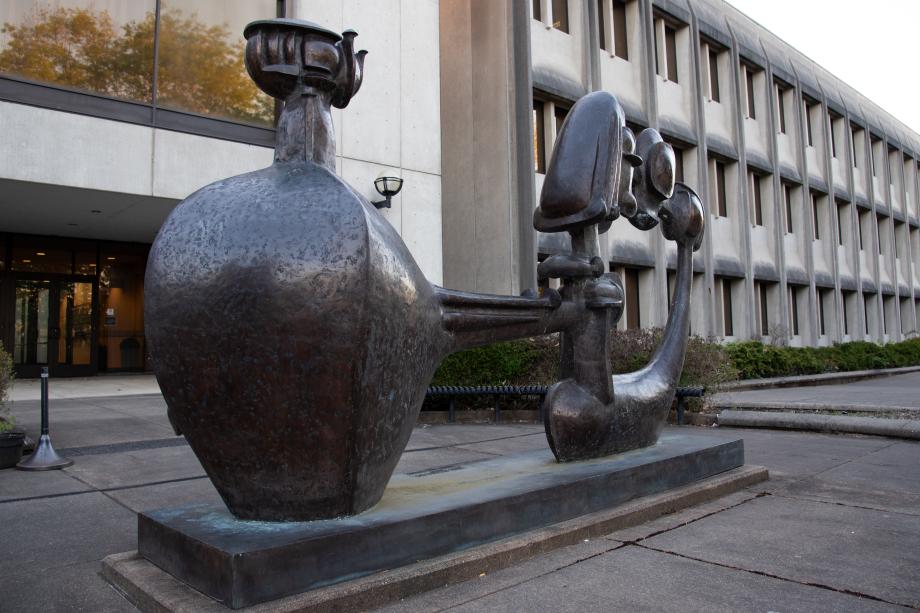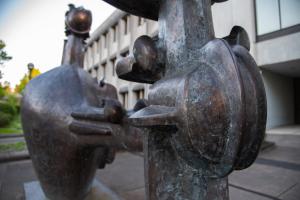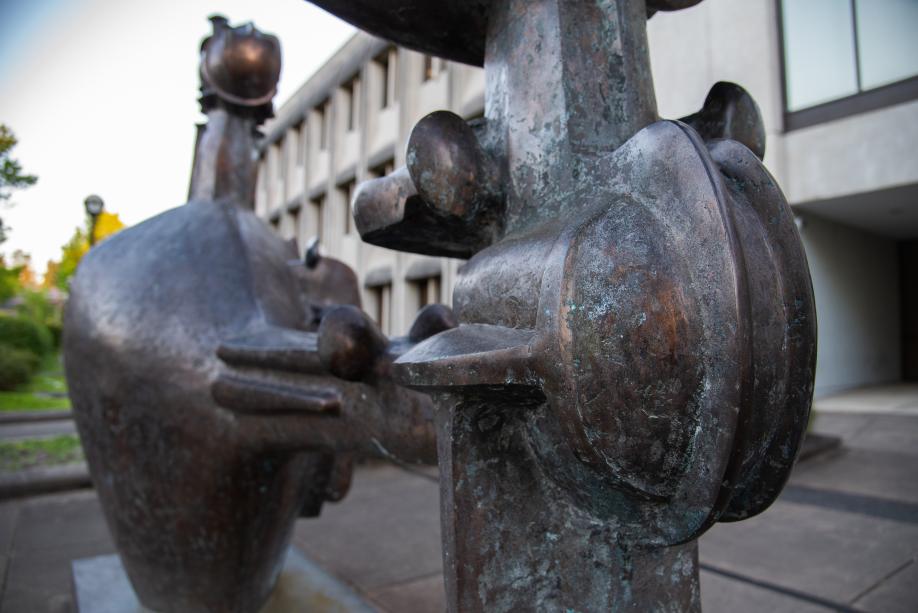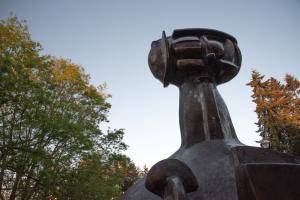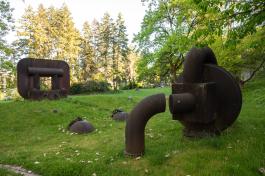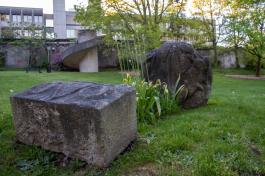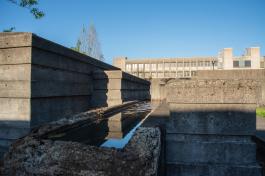The Shaman
James Lee Hansen's bronze sculpture depicts the abstract form of a prehistoric Native American medicine man and symbolizes our innate curiosity to look within ourselves.
About the The Shaman
The Shaman represents “the enduring spirit of inquiry." It was created to inspire people to ask themselves “who and what are we?”
This sculpture was created using the “lost wax" process. Lost wax is a technique where a plaster mold is made from a clay original of the sculpture. This mold is used to cast a wax replica of the original sculpture. Wax coils surrounded by a plaster mold are attached to allow the molten bronze to enter the casting cavity once the wax is heated and melted out. Due to The Shaman’s large size, eight feet high by 13 feet long, it was cast in 12 major sections and then welded together.
History
In 1963, the State Highway Commission granted the Washington State Arts Commission a portion of the construction budget for the new State Highway Administration Building (later renamed the Transportation Building) to place works of art inside and around the exterior of the building. The Arts Commission selected the pieces, and the State Capitol Committee (comprised at that time of the Governor, Lieutenant Governor, and State Lands Commissioner) gave final approval for outdoor pieces.
The commission considered the works of 14 artists and purchased six outdoor sculptures, with the criteria that the art be unique but still compatible with the building and plazas in scale and materials. The sculptures should also not need maintenance. Of these six sculptures, two were selected. One of these was The Shaman, a bronze sculpture by James Lee Hansen. Although there was some initial resistance to the piece’s non-traditional style and cost of $21,000, the State Capitol Committee eventually approved the selection.
At the time, Hansen was considered among the most talented artists in the Pacific Northwest, known for a bronze piece installed in the Federal Savings and Loan Building in Vancouver, WA, as well as other works in churches and museums all along the West Coast. He found inspiration from Chinese bronzes as well as Native American totemic sculptures.
The Shaman was delivered from Hansen’s studio on October 8, 1971, and a large crane placed it outside the Highway Building.
Inscriptions
The Shaman
Sculptor James Lee Hansen
1971


